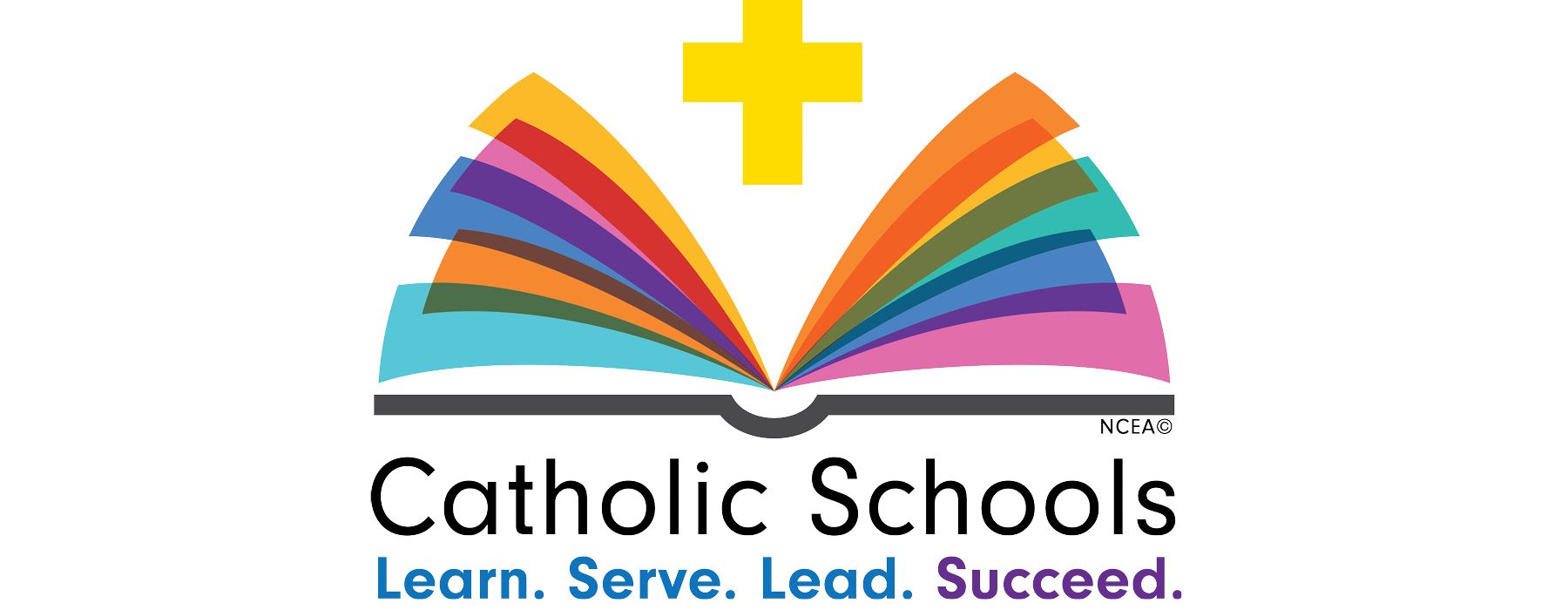January 25, 2020 // Diocese
The five essential marks of a Catholic school
By Dr. Joseph Brettnacher
The Diocese of Fort Wayne-South Bend celebrates the 46th annual Catholic Schools Week this year from Sunday, Jan. 26, through Saturday, Feb. 1. The theme for Catholic Schools Week is Learn, Serve, Lead, and Succeed, as represented by the logo. The logo has an open book made up of multicolored pages that represent how all areas of our school must blend in faith as represented by the cross.
To blend is to mix two substances, so they combine and become one. Nowhere is this more important than the blending of roles that parents and teachers must do to ensure our schools are places of faith.
Archbishop J. Michael Miller, in his 2006 book “The Holy See’s Teaching on Catholic Schools,” talks about the roles of parents and teachers in our schools, along with five essential marks that must be in place before a school is truly Catholic in the eyes of the Church. The five marks of an authentically Catholic school are being inspired by a supernatural vision, founded on Christian anthropology, animated by communion and community, imbued with a Catholic worldview and sustained by Gospel witness.
The Church is clear about parents being the primary educators of their children. The code of canon law, canon 793, indicates that parents have the obligation and moral responsibility to educate their children, and that Catholic parents have the duty, based on local circumstances, to provide a Catholic education for their children. Also, the Church has the “divine mission” to help all achieve the fullness of Christian life.
Parents are their children’s first educators. As their children grow, most parents share the responsibility to educate their sons and daughters with teachers and schools. When parents choose a Catholic education for their children for all the right reasons, they want authentically Catholic schools that are places of faith, knowledge and service. For a school to become authentically Catholic, those five essential marks I mentioned must be present, which leads us to the first essential mark.
Inspired by a supernatural vision
The Church believes that Catholic education, when inspired by a supernatural vision, develops the whole student helping him or her to fulfill their destiny to become saints. This is stated in canon 795. To achieve this, our Catholic schools must integrate Catholic values and morals into the curriculum to develop the whole person to excel spiritually, intellectually, academically, physically and socially. If done properly, our children will become good citizens of the world by loving God and neighbor and proclaiming the good news of Jesus Christ during his or her journey toward sainthood. Catholic schools inspired by a supernatural vision are places of faith.
Founded on Christian anthropology
Being founded on Christian anthropology means there must be an emphasis on the supernatural destiny of students to perfect, in them, all images of God to prepare them to enter heaven. Christian anthropology, in the eyes of the Catholic Church, refers to the study of the human person as it relates to God. It has to do with entering the kingdom of God. So, Catholic educators must have a sound understanding of the human person and correct doctrine. Catholic educators must be good examples in their Christian life. To ensure this, as stated in canon 805, the bishop of each diocese has the right to appoint or approve teachers of religion, and for reasons of faith or morals to remove him or her.
As Archbishop Miller said, our schools must be founded on the life, death and resurrection of Jesus Christ, our Redeemer, to be considered genuinely Catholic. It shows that we believe that Jesus Christ is the primary teacher in our schools and that He inspires every dimension. When we base the foundation of our schools on Christian anthropology, they are places of faith.
Animated by communion and community
The third essential mark of an authentically Catholic school is to be animated by communion and community. Here we need to understand the difference between communion and community. According to Archbishop Miller, the communal dimension has to do with the Church at the center of our faith. What this means is that through the Church, we are unified in our beliefs and actions when it comes to our faith — living out the Gospel message, taking time for worship, certainty in transubstantiation, having a personal relationship with Jesus Christ, believing in the communion of saints and more.

The five marks of an authentically Catholic school are: being inspired by a supernatural vision, founded on Christian anthropology, imbued with a Catholic worldview, sustained by Gospel witness and animated by communion and community. One component of communion and community is the school’s physical environment, which should display images, symbols, icons and other objects of worship that convey its Catholic identity. This art is installed in the Chapel of St. Francis of Assisi at Bishop Luers High School, Fort Wayne.
The Catholic school, which includes all of our parish schools, as a community of faith, is involved with the social nature of the human person. Because we are social beings, a community of faith in a Catholic school requires interaction, teamwork, and cooperation among all members with students and the school’s physical environment, Archbishop Miller said. While interaction, teamwork and cooperation among individuals are easy to understand, what requires clarification is what is meant by the school’s physical environment. The context of the physical environment as part of our Catholic faith has to do with a school’s Catholic identity. When one enters our schools, they should see visible signs, such as images, symbols, icons and other objects of worship that convey this is an authentically Catholic school. When Catholic schools are animated by communion and community, they are places of faith.
Curriculum imbued with a Catholic worldview
The fourth essential mark of a Catholic school is to instill a Catholic worldview throughout its curriculum. Archbishop Miller’s brief explanation of this is that Catholic schooling must be inspired and guided by the Gospel. To provide students with an integral education two principles must be followed. The first is to foster in our students a love for wisdom and truth. The second has to do with ensuring that our students understand that faith, culture and life are harmonious. To foster love for wisdom and truth, authentically Catholic schools must restore the belief that human beings can grasp the truth and know their duties to God and neighbor by casting aside cultural relativism (nothing absolute). The second principle is that students should learn to transform culture through the Gospel. Schools must seek the integration of culture with faith and faith in living. A primary way to do this is through religious education with the realization that it is the responsibility of everyone. When we imbue Catholic education with a Catholic worldview throughout the curriculum, schools are places of faith.
Sustained by Gospel witness
The final indicator that a school is authentically Catholic is the witness of its teachers and administrators. While this is the most natural essential mark to understand, it is the hardest to fulfill. Teachers and administrators must see their jobs as a vocation from God that requires them to participate in the evangelization of the Church. We can accomplish this by living up to the example set by Jesus Christ as a teacher and servant. The hard part comes from revealing the Gospel by actions and not just words. Catholic educators, Archbishop Miller said, must be committed to the teachings of the Church and living a sacramental life whether or not they are Catholics. Catholic schools with educators sustained by Gospel witness are places of faith.
Please join me in prayers of gratitude for our bishop, pastors, parents, administrators, teachers and staff, who ensure that these five marks are brought to life in our Catholic schools by their daily witness.
The best news. Delivered to your inbox.
Subscribe to our mailing list today.







